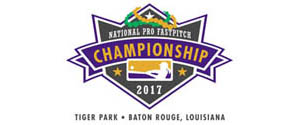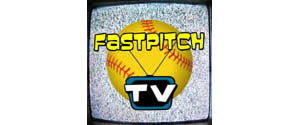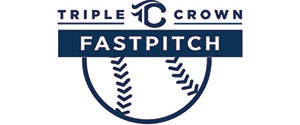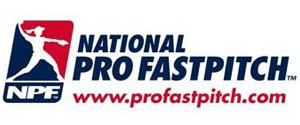People are surprised to see an article written by a catching coach with this title. I am actually not opposed to framing when done correctly. I avoid using the term when instructing my students due to the misinformation out there about what it actually is.
I advocate using techniques that keep strikes looking like strikes. I see so many students come for instruction with the idea that “Framing” is a technique that will fool an umpire into thinking a pitch that is a ball is really a strike.
This technique is widely used and I believe actually contribute to close strikes being called as balls.
I will explain my position on “Framing” by explaining the 4 Laws of Good Receiving that I teach all my students.
I explain to my students that they need to go behind the plate with these 4 laws firmly imbedded in their technique to be the best receivers they can be.
Law #1 “The Catcher Must View the Strike Zone Through the Umpire’s Eyes”
For a catcher to excel behind the plate she must view each pitch as the umpire sees it. I teach my students to have a 2nd view on the game in their minds eye. The first is of course the view of the whole field. The 2nd is the view that the umpire sees when he looks down toward home plate to make the call. He sees the back of the catcher as well as the ball, plate, and batter.
When a catcher develops this view of the game, she will realize how much she can affect the “look” the umpire gets at the pitch as it crosses the plate. She will understand how she can make a tight, good strike look like a pitch that is off the plate and not worthy of being called a strike.
A catcher needs to learn that there is a short period of time that while the umpire is tracking the ball with his eyes that the catcher is out of his direct line of sight. This occurs when the umpires has his eyes focused on the ball leaving the pitchers hands and continues tracking it until just in front of the plate. For that brief moment the catcher is below the umpire’s direct line of sight. It is during this short time that the catcher needs to get properly positioned to receive the pitch.
Law #2 “ It’s a Catcher’s Job to Keep Strikes Looking like Strikes”
This is where my teaching tends to go against the flow a little. I do not want to see my catchers catching a pitch that clearly is a ball and pulling, pushing, or somehow moving the glove to try and reposition the pitch at a spot they feel will get them a strike call. I don’t want them trying to “Make a ball look like a strike”. The best way to keep a strike looking like a strike is to never do anything that would make it look like a ball. The next 2 Laws discuss ways to accomplish that.
Law# 3 “Beat the Ball to The Spot”
My goal for my catchers is that their movements behind the plate when they receive are smooth, “quiet”, quick but not hurried.
They set the target with their glove in the middle of their body. The goal is to have adjusted their position so that their glove is in position to catch the ball before the ball gets there. They want their glove to “Beat the Ball to the Spot.”
This is accomplished as follows.
• Their feet are turned up the lines.
• Their heels are in contact with the ground as well as the balls of their feet.
This makes it easy for them to receive any pitch that catches even the edge of the plate by shifting their weight that direction. They still keep the glove in the middle of their body. They can avoid “reaching” for pitches using this technique. When shifting their weight toward the ball they are able to keep their shoulders level at all times. The look they present to the umpire is one of control, and one that says that this pitch is being caught on the catcher’s midline, it must be a strike.
Often times a catcher doesn’t shift her weight and reaches for the ball on the outside of the plate, even though it may be a close strike, by reaching at the last minute the message sent is that this pitch is not where the catcher wanted it and you may lose the strike call. Have the catcher get the glove to the contact point ahead of the ball. If a catchers glove shoots out and meets a fastball while both objects are moving the ball will usually win the battle and pull the glove off the plate.
This technique is done in addition to proper handling of the glove to assure that all parts of the glove are in the strike zone when the ball is caught.
Imagine a right handed catcher catches a ball on the inside edge to a right-hander, and has her thumb in the 6-o'clock position when the ball hits it. To make that catch she will have to allow her left elbow to go to the left to get the glove in position. Her elbow will now be nearly a foot left of the edge of the strike zone. Also, over half of the glove will be to the left of the strike zone. So even if the ball is cleanly a strike, all kinds of signals are being sent that this pitch is too far inside.
If the catcher makes a few subtle changes he will ensure that he isn’t doing anything to make this strike look like a ball.
First she sets up with his thumb set at 3-o'clock. This positions her elbow to bend down, not out to the left. She shifts her weight to the left, and positions her glove to catch the left half of the ball. Her hand rotates slightly so her thumb is between 12 and 1 o'clock. The ball flies past the front edge of the glove and is caught in the back half of the pocket. The back edge of the glove is vertical, so no part of the glove is out of the strike zone. Since the elbow bent down, no part of the left arm is out of the strike zone. We have caught a close strike and did nothing to make it look like a ball.
Law#4 “The Glove Never Moves After the Ball Hits It”
One of the main techniques that many players think is part of good receiving is moving the glove after the ball hits it to a spot that will more likely get them the strike call. I have always felt that most of the technique is insulting to the umpire. He can hear the ball hit the glove, so what’s the point to drag or pull the ball somewhere it wasn’t. I teach that if the technique I have described above is employed then you will maximize your strike calls and build a better relationship with the umpire by not trying to move a pitch after it hits the glove.
In Conclusion: I don’t teach framing. I teach good sound receiving. Just keep strikes looking like strikes and you will succeed
Fastpitch Discussions
Never Teach your Catcher to Frame a Pitch!
20 posts
• Page 1 of 2 • 1, 2
- catchingcoach
- Posts: 103
- Joined: Mon Dec 31, 2007 11:44 pm
- Location: Hudson NH
Great post!What about using glove side knee to reach and stabilize outside pitch?rt handed catcher/rt handed batter?
- sb junkie
- Posts: 61
- Joined: Tue Dec 18, 2007 5:52 pm
catchingcoach i enjoyed reading this post very much. You have no idea how many times that i have seen coaches of our younger teams trying and trying and trying to teach the kids how to frame and failing time after time.
- maxedout007
- Posts: 45
- Joined: Tue Jan 01, 2008 5:19 pm
I believe in framing but it's like you said it cant be huried , can not be shoddy poor skilled frame ,a good catcher that knows her pitcher should be able to frame not by moving the ball but by meeting the ball . splitting the plate catching the low pitch by scooping up to the strike zone, out side pitch by prepositioning splitting the plate and meeting the ball into the strike zone.
1) Do not Frame anything that is obviously not a strike.BAD!!
2) It's not supposed to be majic you have 40 ft to angle it off and less then 19 inches to do it
in.
3) Position is key always split the plate this will give room to angle off the ball into the zone.
4) RH Catcher catch the inside pitch turn the glove to yourself so that you can see it almost
as if youre presenting the catch to the ump.
Opposite for the LH Catcher
b)Catch the breaking pitches such as screws and curves by moving into to zone against
receiving the pitch in the strike zone.
5) Everything has to be subtle smooth flowing complimenting the pitch
6) Do not frame the obvious if its a strike hold count one onethousand and the return ball
7) Make the strike look like a strike
8) Use the shoulders when angling adjusting to a wider stance will help position the angle.
1) Do not Frame anything that is obviously not a strike.BAD!!
2) It's not supposed to be majic you have 40 ft to angle it off and less then 19 inches to do it
in.
3) Position is key always split the plate this will give room to angle off the ball into the zone.
4) RH Catcher catch the inside pitch turn the glove to yourself so that you can see it almost
as if youre presenting the catch to the ump.
Opposite for the LH Catcher
b)Catch the breaking pitches such as screws and curves by moving into to zone against
receiving the pitch in the strike zone.
5) Everything has to be subtle smooth flowing complimenting the pitch
6) Do not frame the obvious if its a strike hold count one onethousand and the return ball
7) Make the strike look like a strike
8) Use the shoulders when angling adjusting to a wider stance will help position the angle.
- CallingCadence14
- Posts: 72
- Joined: Sun Jan 13, 2008 9:31 pm
I have seen some older girls who have the habit of framing do two things:
1) Frame when there are base runners. A savvy base runner gets 2-3 steps on a catcher who is a habitual framer. I have seen it time and time again.
2) Catcher frames for 5-6 seconds. Drives me crazy.
1) Frame when there are base runners. A savvy base runner gets 2-3 steps on a catcher who is a habitual framer. I have seen it time and time again.
2) Catcher frames for 5-6 seconds. Drives me crazy.
-

slider201 - Posts: 53
- Joined: Thu Dec 27, 2007 3:05 pm
- Location: South Texas
Dave, great advice as always. You do see a lot of the girls bringing the glove in from way off the plate. Keeping a strike a strike is the best way to put it. Therefore, the pitch on the border line is the one of concern. Catching the outside of the marginal pitch can make the difference. But if your catcher has been moving the glove all over the place and holding it there inning after inning, you may not get those marginal calls. The best way to help your pitcher is to keep the strikes the strikes. It is the pitchers responsibilty to throw them, it is the catcher's to keep them. Just my two cents.
Sedit qui timuit ne non succederet - He who feared, he would not succeed, sat still.
-

Joe Dirt - Posts: 96
- Joined: Tue Dec 18, 2007 12:38 pm
Joe Dirt wrote:Catching the outside of the marginal pitch can make the difference. But if your catcher has been moving the glove all over the place and holding it there inning after inning, you may not get those marginal calls.
When this happens I usually will brush the plate between batters and tell the catcher if she has to sell me on the pitch, it was probably a ball.
My goal is for the pitcher to throw strikes and will discreatly communicate with the catchers. On pitches that just miss I'll say something like: bring that in a little or she's missing low.
- umpinva
- Posts: 360
- Joined: Sun Dec 30, 2007 6:47 pm
Umpinva-I think you may have misunderstood. The marginal pitch, meaning the ball on or near the border of the strike zone. The call can go either way. I am not saying to bring a ball into the strike zone. I am saying to keep a ball in the strike zone. If the catcher is trying to sell you on pitches that are not strikes her credibility will be gone.
Sedit qui timuit ne non succederet - He who feared, he would not succeed, sat still.
-

Joe Dirt - Posts: 96
- Joined: Tue Dec 18, 2007 12:38 pm
Joe Dirt wrote:Umpinva-I think you may have misunderstood. The marginal pitch, meaning the ball on or near the border of the strike zone. The call can go either way. I am not saying to bring a ball into the strike zone. I am saying to keep a ball in the strike zone. If the catcher is trying to sell you on pitches that are not strikes her credibility will be gone.
It's on the marginal pitches where the catcher is moving the glove back into the strike zone that I let her know that if she has to sell me on the pitch it must have been a ball. My other commentary about my goal for the pitchers to throw strikes was to show how umpires can use the mentioned technique to reign the pitches back into the strike zone.
- umpinva
- Posts: 360
- Joined: Sun Dec 30, 2007 6:47 pm
umpinva wrote:Joe Dirt wrote:Umpinva-I think you may have misunderstood. The marginal pitch, meaning the ball on or near the border of the strike zone. The call can go either way. I am not saying to bring a ball into the strike zone. I am saying to keep a ball in the strike zone. If the catcher is trying to sell you on pitches that are not strikes her credibility will be gone.
It's on the marginal pitches where the catcher is moving the glove back into the strike zone that I let her know that if she has to sell me on the pitch it must have been a ball. My other commentary about my goal for the pitchers to throw strikes was to show how umpires can use the mentioned technique to reign the pitches back into the strike zone.
Umpinva,
As I said in my original post I believe there shoudl be no movement of the glove after the ball hits it at all, marginal pitch or not. Catcher should beat the ball to the stop and catch the ball and allow no movement ofv the glove afterwards. I tell coaches that have my girls on their teams that if their pitchers throw strikes these catchers will keep them looking like strikes
- catchingcoach
- Posts: 103
- Joined: Mon Dec 31, 2007 11:44 pm
- Location: Hudson NH
20 posts
• Page 1 of 2 • 1, 2




























